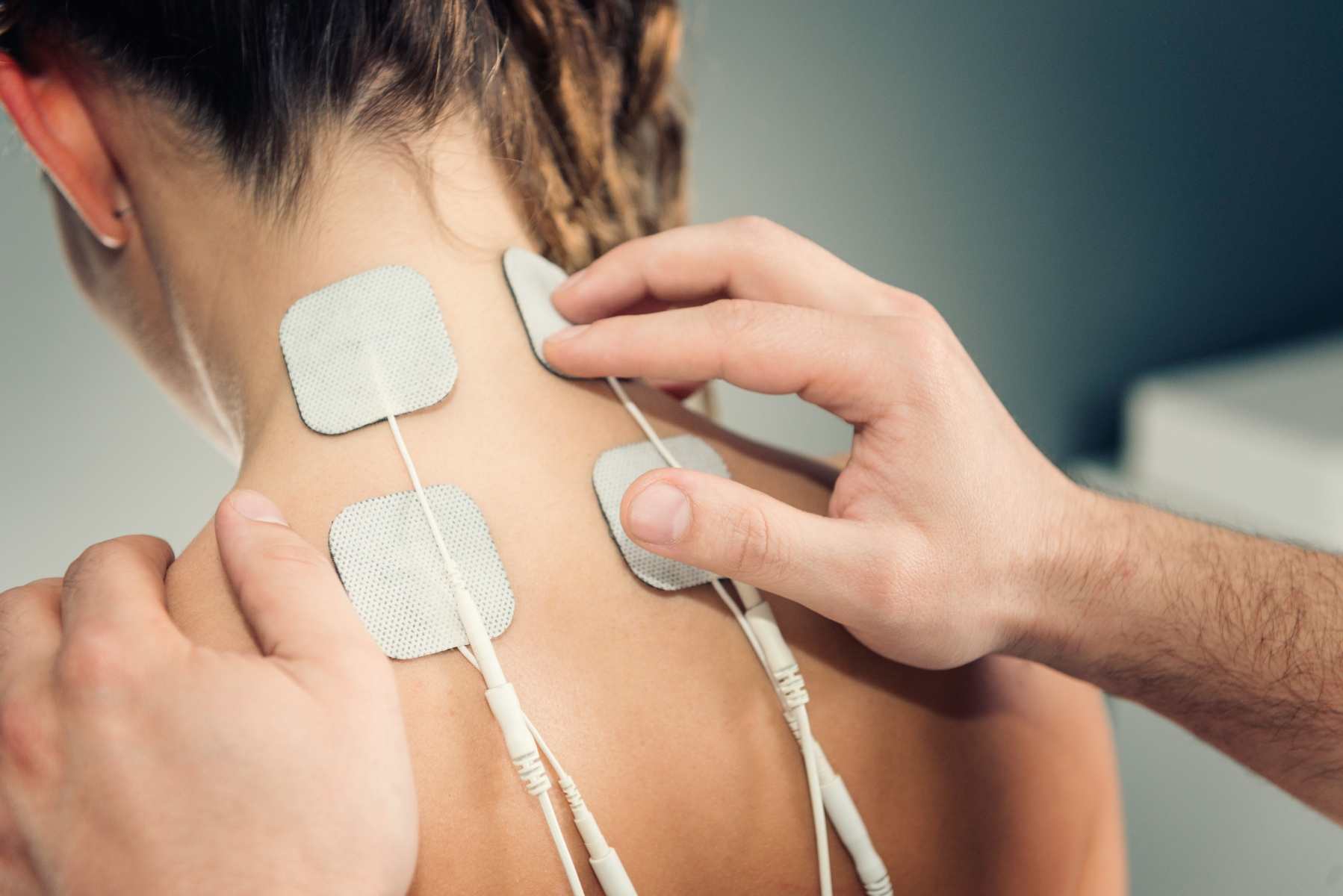How Is Total Knee Replacement Surgery Performed?
Deciding to have total knee replacement surgery can be a difficult, even frightening decision. Planning and discussing the surgery with your doctors and loved ones can take time, and surgery is always a daunting subject. However, if your quality of life has been severely affected by pain and reduced mobility in your knees, replacement surgery is your best option.
The best way to become more comfortable with the idea of surgery is to learn as much as you can about it. Knowing what the surgery involves can ease your fears, and knowing what happens before, during and after surgery can help you better prepare for the big day.
To help you better understand this surgical procedure, we’ve outlined what you should know about the anatomy of the knee, the reasons for knee replacement surgery, what happens during knee replacement surgery and what you can expect of the procedure before, during and after the surgery.
What Is the Anatomy of the Knee?
To best understand what happens during knee replacement surgery, you must understand the basic anatomy of the knee.
The knee is the largest, most complex joint in the body. Like all joints, the knee is an area of the body where two bones meet, held together my muscles, ligaments and tendons. In the case of the knee, it is where the thigh and shin bone meet.
The basic parts of the knee include the following:
- Tibia: The shin bone, the largest bone of the lower leg. The upper end of the tibia is part of the knee joint.
- Femur: The thigh bone, or upper leg bone. The lower end of the femur is part of the knee joint.
- Patella: The kneecap bone.
- Cartilage: This is a type of tissue that covers the surface of a bone at a joint, reducing the friction caused by movement within a joint.
- Synovial Membrane: This tissue lines joints and seals them into a joint capsule. This membrane secretes synovial fluid around the joint to lubricate it.
- Ligament: This tough, elastic connective tissue surrounds the joint, lending support and limiting the joint’s movement.
- Tendon: This tough connective tissue connects muscles to bones, controlling the movement of the joint.
- Meniscus: This is a curved part of cartilage in joints that act as a shock absorber. These c-shaped pads cushion the joint, reducing wear.
- Muscles: The knee also involves two groups of muscles, including the quadriceps and the hamstrings. The quadriceps muscles are located on the front of the thigh and straighten the leg. The hamstring muscles are located at the back of the thigh, and they bend the leg at the knee.
Malfunction in any of these components can result in problems in the knee joint over time, while complete failure may require knee replacement surgery.
Why Do People Need Knee Replacement Surgery?
While our knees are the largest joints in our bodies, they are also the most stressed. Because of this stress, knee replacement is a necessity for thousands of people every year. In 2010 alone, 700,000 people had knee replacement surgery, and the number is expected to grow every year. Much of this is due to our increasing lifespans, as well as the increasing incidence of obesity in industrialized nations.
Knee replacement surgery is most commonly needed as a result of the following conditions:
- Osteoarthritis: This is a disease characterized by the breakdown of joint cartilage, and it usually occurs in people over the age of 50. In the knee, this manifests as a breakdown of the cartilage protecting the ends of the tibia and femur and the inside of the patella. This damage can eventually result in bones grinding against one another, without the protective cartilage coating. This can cause reduced mobility of the joint, as well as moderate to severe joint pain, making everyday activities like walking and climbing stairs difficult, if not impossible.
- Rheumatoid Arthritis: This is a form of inflammatory arthritis where the immune system attacks the synovial membrane surrounding the knee. This normally manifests as swelling and inflammation around the joint. This degradation of the synovial membrane removes the protective barrier of the knee, resulting in increased damage to the cartilage. Over time, this wear on the cartilage results in reduced mobility and moderate to severe pain as the bones increasingly grind against one another.
- Post-Traumatic Arthritis: This form of arthritis follows a knee injury. Bone fractures surrounding the knee or tears in the knee ligaments or meniscus can reduce the structural support of the knee joint, increasing the wear of cartilage over time. If this injury results in enough cartilage degradation, the bones will begin to grind directly against one another, causing moderate to severe pain.
- Avascular Necrosis (AVN): This condition affects teens and young adults. In this condition, the bones in the knee become soft, causing the bone and cartilage to wear down much more quickly than in a normal individual. Usually, this condition resolves during adulthood, but in rare cases, the wear on the bone is extensive enough to cause early arthritis.
- Abnormal Alignment: More commonly recognized as being ”knock-kneed” or “bow-legged,” this condition creates abnormal stress on the joint, resulting in abnormal wear. This can quickly result in arthritis, as the joints are not prepared for this abnormal usage, and they can wear down much more quickly under these circumstances.
In all cases, one or more bone surfaces may be damaged. Depending on the extent of damage and the age, weight and activity level of the patient, the doctor may decide whether a total or partial knee replacement is necessary.
While these are the most common conditions requiring knee surgery, this is not an extensive list. If you are experiencing knee pain as a result of a disease outside of this list, speak with your doctor to decide if knee replacement may be a solution for you.
Are There Any Alternatives to Knee Replacement Surgery?
Unfortunately, when the cartilage in the knees is gone, knee replacement is the only viable option to regain mobility and eliminate pain. However, if you have been diagnosed with a degenerative joint disease, there are a few steps you can take to mitigate pain and prolong the life of your knees. This includes:
- Anti-inflammatory medication: For those with rheumatoid arthritis affecting the knees, anti-inflammatory medications can help reduce swelling in the knees, reducing stress on the joint.
- Pain medication: Basic painkillers can help alleviate some of the discomfort caused by joint problems, at least for a short time.
- Limiting painful activities: Try to limit painful activities in your daily life by having a spouse, relative or friend help you with them.
- Assistive devices for walking: If walking is painful or difficult for you, but you absolutely must walk on a regular basis, look for an assistive walking device. A walker or cane can help support you and reduce the stress on your knees as you go about your daily activities.
- Physical therapy: A physical therapist can evaluate your physical health and help develop an exercise program that may alleviate your symptoms by strengthening the muscular support system around your joints.
- Cortisone injections: These injections help reduce inflammation, which can help rheumatoid arthritis sufferers alleviate their symptoms.
- Viscosupplementation injections: These injections support your synovial meniscus by lubricating your joint, reducing the wear on your cartilage.
- Weight loss: Excess weight can put extra stress on your joints, wearing them down much faster. Losing weight can alleviate some of this stress and increase the life of your knees.
Always consult with your doctor or a specialist before exploring any of these options. If you have tried everything and still experience debilitating pain in your knees, it may be time for you to go through with knee replacement surgery.
What Is Knee Replacement Surgery?
Knee replacement, also known as arthroplasty, is a surgical procedure invented in 1968. Since then, it has become one of the most successful procedures in medicine.
The surgery itself takes one to two hours on average and is completed while the patient is under general anesthesia. The process involves the resurfacing of the damaged ends of the bones in the knee with metal and plastic parts, allowing better movement of the knee joint. It involves four basic steps:
- Prepare the bone: The damaged cartilaginous ends of the femur and tibia are removed, along with a small amount of the bone underneath.
- Position the implants: Once the cartilage and bone is removed, metal components are put in their place, recreating the tibial and femoral surfaces of the joint. Most commonly, these prostheses are cemented in place using surgical cement. Uncemented prostheses are less common, involving attaching the prosthesis to the bone with a porous surface, which the bone grows into. Sometimes, a combination of the two types is used.
- Resurface the patella: The patella’s interior surface is removed and resurfaced with a plastic component. Depending on the condition of the patella, this may or may not be done.
- Insert a spacer: A medical-grade plastic spacer is placed between the metal implants, so they can easily glide, and shock absorber that simulates the cartilage and meniscus in a normally-functioning knee.
What Are the Risks of Knee Replacement Surgery?
Every surgical procedure comes with risk, but the complication rate following total knee replacement surgery is quite low. Fewer than 2% of patients experience serious complications following a knee replacement procedure. Even when they do, however, they are rarely life-threatening — usually the only significant result is the prolonging of the recovery process. However, you should still be aware of these risks in the event that they occur during your surgery. Some of these risks include, but are not limited to:
- Bleeding: As the surgery involves physically cutting into the knee, bleeding shortly after the procedure is expected. However, improper sealing of the wound, insufficient clotting and injury to blood vessels around the knee can cause more bleeding than expected. Be sure to communicate concerns with your doctor during the healing process if you notice any unusual bleeding or bruising.
- Infection: Infection can occur in the wound or around the prosthesis, and it can happen in the hospital or after you get home. It may happen any time from immediately after surgery to years after the fact. Minor infections in the wound are typically treated with antibiotics. However, a major infection in the wound or prosthesis may require additional surgery and even removal of the prosthesis.
- Blood clots: Blood clots are can be relatively common after knee replacement surgery, usually occurring in veins of the leg. These clots can be life-threatening if they break free and travel to your lungs, so your surgeon will give you suggestions for how to prevent these clots from happening. Prevention measures may include periodic evaluations, leg exercises to improve circulation, support stockings and prescription blood-thinners.
- Loosening or wearing of the prosthesis: While surgical technology is continuously advancing, implant surfaces still can wear down and loosen over time. Severe wear and loosening can result in another replacement down the road.
- Stiffness: After surgery, an average 115° of movement is generally expected, but scarring of the knee can limit this. If you experienced severe stiffness before surgery, the likelihood of you experiencing some stiffness after surgery is even greater. This is often remedied with physical therapy.
- Continued pain: Some patients continue to experience knee pain after surgery. However, this tends to be rare — the majority of patients experience exceptional pain relief following a successful knee replacement.
If you have any concerns about these complications prior to your procedure, discuss them thoroughly with your orthopedic surgeon and see what steps you can take before and after your surgery to decrease any chances of complications.
What Happens Before Knee Replacement Surgery?
Before your surgery, there are a number of discussions, evaluations and planning stages you should complete to make the process as smooth as possible.
- Speak with your doctor: Your doctor and surgeon will need to discuss the surgery with you in detail before you sign up for the procedure. Make sure to ask any lingering questions about the procedure and discuss a detailed schedule with them before proceeding.
- Consent to surgery: You will have to sign a consent form, indicating you gave permission to do the procedure. Read the form in detail and discuss any issues or questions you may have.
- Undergo testing: You will need to provide a complete medical history, including any allergies and medications you are currently taking. You’ll also undergo several tests to ensure you are in good enough health to go through surgery. These tests include a complete physical examination, blood and urinary tests and others specific to your particular medical condition and history.
- Schedule assistance: You will need to arrange for someone to help around the house for a few weeks after you are discharged from the hospital. This can be a sibling, spouse, child or other relative. Alternatively, you can hire someone to assist you with your daily activities. You will also be unable to drive for a while, so arrange for alternative transportation for the few months after your surgery.
- Prepare your home: To make the recovery process as easy as possible, it’s important to prepare your home for life after your knee surgery. If you live in a multi-level house, make sure everything you need is available on the main level before you go in for surgery — you will need to avoid stair-climbing for a while after the procedure. Make sure proper handrails are installed along all stairs and that safety handrails are installed in your shower or bath.
You will also need to remove any loose carpets or electrical cords that may cause you to trip. Other purchases and preparations may include a stool to help elevate your leg, a shower bench or chair, a raised toilet seat, a sponge with a long handle or a shower hose, sock aid, a dressing stick, a long-handled shoe horn and a reaching stick. - Undergo RFA treatments: Your doctor may recommend RFA treatments a couple weeks before your surgery. Radiofrequency ablation, or RFA treatments, are proven to reduce pain before and after surgery, and are effective at minimizing complications and improving functional mobility after the surgery. It is up to you and your doctor to assess whether the process is right for you.
The procedure is generally very short, but you should not eat within 6 hours of the appointment, and should not drive yourself afterward. The process is a relatively short one, beginning with the application of a local anesthetic to the treatment area. Using an X-ray to guide it, the doctor will insert a small needle carrying a microelectrode into the area and stimulate it slightly. The doctor will ask you if you feel a tingling sensation to ensure that the electrode is in the optimal area for treatment. Upon positioning the microelectrode, the doctor will run a small radiofrequency current through the electrode into the surrounding tissue, heating the tissue without causing you discomfort.
After this small procedure, a bandage will be placed over the injection site and you will be brought to a recovery room for observation and instruction regarding your discharge. You should not drive or operate machinery for 24 hours after this procedure, and you should avoid any strenuous activity. Generally, the bandage can be removed before you go to bed the same evening, and you can resume your normal diet immediately. - Prepare for surgery: The day before your surgery, prepare a bag for the hospital stay. Pack any essentials and make sure your ride to and from the hospital is set up. Also remember to fast for at least eight hours before surgery.
What Happens During Knee Replacement Surgery?
Knee replacement surgery is a relatively simple process involving surgery under anesthesia followed by a short hospital stay. The entire process involves the following:
- Prepare for surgery: Immediately before the procedure, you will be given a gown to change into, along with an intravenous, or IV, line in your arm or hand.
- Under anesthesia: After putting you under anesthesia, doctors and nurses will properly position you on the operating table. If necessary, they will insert a catheter and clip any excessive hair at the surgery site. The entire time you are under anesthesia, the anesthesiologist will monitor your heart rate, blood pressure, breathing and blood oxygen level to ensure your well-being throughout the surgery.
- First incision: The skin over the surgical site is cleansed with antiseptic immediately before making the first incision. This incision may be between eight and 12 inches, and a drain may be placed in the incision to remove fluid.
- The surgery: The doctor will proceed with the knee surgery, removing the damaged surfaces of the knee joint and resurfacing them with the plastic and metal prostheses.
- Closing the incision: After completing the surgery, the incision will be closed with stiches or surgical staples. A sterile bandage or dressing will be applied to cover the incision as it heals and you go through the post-surgery process.
What Happens After Knee Replacement Surgery?
After the procedure is completed, you will be taken to the recovery room for observation. When you wake up, you will be monitored to make sure your blood pressure, pulse and breathing are stable before being taken to your hospital room. Generally, you will be in the hospital for one to four days after surgery. While you are in the hospital, a few things will generally happen before you are discharged:
- Physical therapy: A hospital physical therapist will meet with you soon after surgery to design an exercise program for you. Generally, this therapy plan will help you accomplish a few goals before you are discharged, including getting up from your bed, walking with the use of an assistive device like a cane or walker and performing basic exercises. Through this process, you will be on pain medication.
- Rehabilitation: In some cases, you will be discharged to a rehabilitation center, where you will undergo further physical therapy until you regain enough strength and range of motion to safely function at home.
- Discharge: You will be given specific instructions on the cleaning and care of your surgical area, including bathing, exercise, swelling and pain management as well as any dietary changes or special considerations.
After being discharged from the hospital, your arranged ride should help you from the hospital or rehabilitation center to your home. Upon arriving home, there are a few things you should keep in mind:
- Monitoring: You will need to follow up with your doctor to remove the stitches and update them on your progress. Report any fevers or redness, swelling or pain at the incision site to your doctor, as these can indicate an infection. Be sure to give your doctor updates on any strange sensations, problems or injures or falls you’ve experienced after your knee surgery.
- Take it slow: Slowly ease back into your normal activities after you get home. Take it a day at a time, and take pride in gradual improvements. It will take time before you are fully back to normal, but taking it slowly will prevent you from opening your incision, overstressing your muscles or dislodging your new prosthesis.
Choose iOrtho for Your Knee Replacement Surgery
Knee replacement surgery can be a daunting prospect. However, learning about the process and how to prepare for it can set you up for a faster recovery time. That means you can get back to doing the activities you love sooner and more painlessly.
If you want to learn more about knee replacement surgery, talking with a professional can help. iOrtho’s knee replacement surgeons have served patients in Staten Island, New York City, Jersey City and the surrounding areas, and we can help you too.
If you are looking for a knee replacement surgeon in Staten Island, NYC or Jersey City, we can help. Contact iOrtho online today to schedule an appointment.
Sources
http://orthoinfo.aaos.org/topic.cfm?topic=a00389
http://www.healthline.com/health-slideshow/total-knee-replacement-surgery-step-by-step
https://www.drugwatch.com/knee-replacement/surgery/
http://regionalorthopedic.com/expect-knee-replacement-surgery/
http://www.webmd.com/pain-management/radiofrequency-ablation





